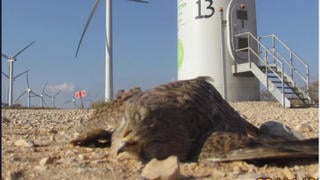Hurricane Patricia's eye reached Mexico's southwestern coast at 6:15 p.m. local time Friday with sustained winds of 165 mph (270 km/h), according to the National Hurricane Center in Miami.
Patricia's 200 mph sustained winds measured earlier Friday made it the strongest tropical storm ever recorded in the eastern Pacific or Atlantic, the NHC said.
American astronaut Scott Kelly, who is watching the tropical monster from his orbital perch in the International Space Station, tweeted a warning back to earth: "It's massive. Be careful!"
Hurricane #Patricia approaches #Mexico. It's massive. Be careful! #YearInSpace pic.twitter.com/F5LgnjOjey
-- Scott Kelly (@StationCDRKelly) October 23, 2015
Footage of #HurricanePatricia from @Space_Station today as the mammoth system moved north. https://t.co/hmrs97O651 https://t.co/ThM3P34kt2
-- NASA (@NASA) October 23, 2015
Satellites monitoring record-breaking #HurricanePatricia as it rapidly intensified. Details: https://t.co/hmrs97wvdt pic.twitter.com/HyBYaOr318
-- NASA (@NASA) October 23, 2015
Patricia is expected to emerge into the Gulf of Mexico and head toward Texas after raking over Mexico.
"The global models continue to depict the development of a cyclone near the Texas coast over the weekend," the NHC said "This system should be non-tropical in nature. However, this cyclone is expected to draw significant amounts of moisture from Patricia's remnants, and could result in locally heavy rainfall over portions of the northwestern Gulf of Mexico coastal area within the next few days."
Developing...
Lead Stories' Trendolizer constantly scours social nets for trending content about hurricanes. Scroll down for the latest.













